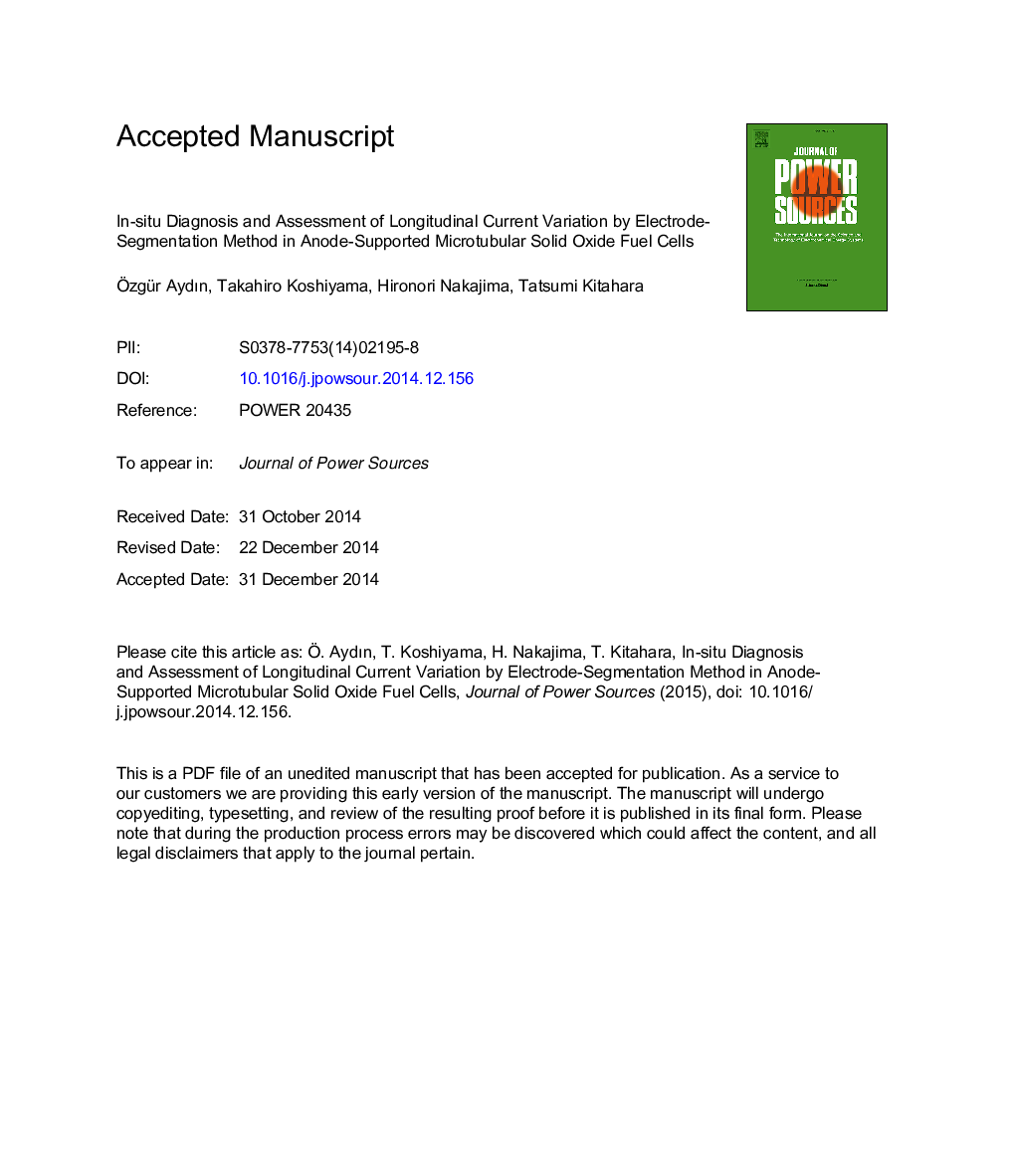| Article ID | Journal | Published Year | Pages | File Type |
|---|---|---|---|---|
| 7733298 | Journal of Power Sources | 2015 | 29 Pages |
Abstract
Electrochemical performance of Solid Oxide Fuel Cells (SOFC) is highly dependent on the spatial distribution of the reactant and product species. The structure degradation processes are also associated with the spatial quantities. In fact, spatially measured current variations provide profound information about the local processes. Due to the geometry of microtubular SOFCs (mt-SOFC), notable current variations can develop along the cells and cause temperature variations. By applying the electrode-segmentation method, the longitudinal current variation is thus experimentally investigated in an anode-supported mt-SOFC for various cell voltage and fuel flow rates. As a result, a remarkable current variation is shown among the segments for various flow rates. The current of the downstream segment rapidly decreases with the declining cell voltage implying the fuel starvation while the other segments continue to increase their currents. The conventional polarization curve drawn for the whole cell overlaps with the midstream polarization curve, considerably differing from the other segments. The higher N2 flow rate with the identical H2 flow enhances the overall performance. In comparison with the estimated practical power generation capacity of the whole cell, a notable performance-loss is found due to the inhomogeneity.
Related Topics
Physical Sciences and Engineering
Chemistry
Electrochemistry
Authors
Ãzgür Aydın, Takahiro Koshiyama, Hironori Nakajima, Tatsumi Kitahara,
